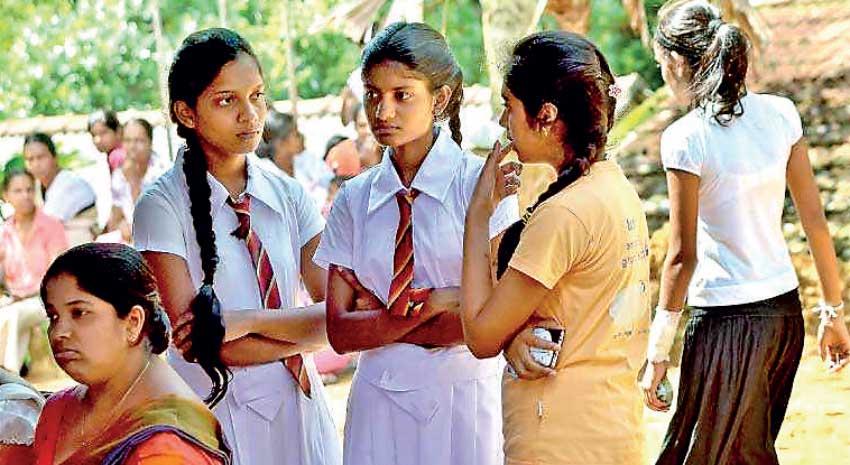Reply To:
Name - Reply Comment

 Overseas migration for work or study seems a popular option for Sri Lanka’s youth.
Overseas migration for work or study seems a popular option for Sri Lanka’s youth.
The Central Bank data shows that in 2019 alone, the age group 25-29 recorded the highest number of departures abroad for skilled, semi-skilled and unskilled employment. This age group also recorded the second-highest number of departures for professional, middle and clerical level jobs. The UNESCO’s Eurostat data collection on education for 2020 states that the total number of Sri Lankan students overseas is 24,118.
A significant segment of the youth population seems dissatisfied with the available opportunities and choices within Sri Lanka. The above numbers reflect their lack of faith in a better and safer society in the years to come. For decades, this lack of opportunity was blamed on the war. However, even 12 years after the conclusion of the war, little has changed. It is worthy to explore why.
How did we get here?
The island nation’s predicament was in the making for almost 70 years. Consecutive governments since independence have failed to successfully implement policies to deliver economic growth and better living standards.
Trade is the engine of growth but over the last 15 years, Sri Lanka has shied away from trade-led growth. Although Sri Lanka was South Asia’s first to embark on economic liberalisation in 1977 and despite the relatively robust economic performance that resulted even during the war years, Sri Lanka began to move away from international trade and investment.
Starting in 2004, import tariffs were raised in an ad hoc fashion to finance a growing defence budget. By 2009, Sri Lanka had one of the world’s most complex import tax regimes made up of para tariffs (taxes above custom duties) and customs duties. By 2009, the overall protection more than doubled from 13.4 percent to 27.9 percent.
Sri Lanka’s import policies by this time were as protective as they had been 20 years ago. While Sri Lanka continued to miss the boat of economic globalisation, our East Asian neighbours such as Vietnam and Thailand have risen to prosperity by successfully integrating with global value chains.
This was compounded by an increase in state spending and increased state involvement in the economy. Much of it is financed by debt. Sri Lanka’s state expenditure has ballooned. Due to excessive borrowing, the central government’s highest recurrent expenditure is on interest payments, which were at 36 percent in 2020.
The country boasts a bloated public sector. The Finance Ministry states that 30 percent or the second largest of the central government’s recurrent expenditure is spent on salaries and wages. This amounted to a staggering 794.2 billion in 2020, an increase of 15.7 percent from 2019. The Economy Next reported in June that 86 percent of tax revenue went into salaries and pensions in 2020.
Moreover, these salaries are only part of the problem, much expenditure is wasted sustaining mismanagement, corruption and negligence within some 527 SOEs, whose cumulative losses outweigh profits.
Tax revenues have not kept pace with expenditure and the tax system is weighted towards indirect taxes. In 2020, of the share of Sri Lanka’s tax revenue, only 22.1 percent was direct taxes, with 77.9 percent being indirect. This is highly regressive as a large component of indirect taxes end up on goods and services consumed by the average Sri Lankan imposing a higher burden on low-income earners.
Consecutive government’s reluctance to rectify these economic miscalculations through hard reforms have brought the island to a precarious state of high levels of accumulated debt with exponentially growing interest payments. The country now has a debt-to-GDP ratio of over 101 percent, while foreign reserves have declined to 2.8 billion – sufficient for less than two months of imports. Fitch ratings have estimated that Sri Lanka’s foreign currency debt service obligations until 2026 amount to US $ 29 billion. Sri Lanka’s debt is on an unsustainable path.
So what’s at stake for young people in all this?
Sri Lanka’s youth sit helplessly as bungled policy results in the economy tanking, taking them further away from their aspirations, hopes and dreams. The labour force survey for the fourth quarter (4Q) of 2020 reported a startling youth unemployment (15-25 years) rate of 25.7 percent.
In terms of education level, the highest unemployment rate is reported from the GCE A/L and above group. Although the labour force is educated, their main source of employment remains in the informal sector.
Nevertheless, skills gap and mismatches have been identified as a major obstacle preventing employment. For example, a 2019 survey estimated a shortage of 12,140 ICT graduates. A World Bank study recognised poor English language skills as another impediment.
In addition to this, COVID exacerbated Sri Lanka’s challenge of providing employment. Unemployment as a percentage of the total labour force increased from 4.5 percent to 5.2 percent between 2019 4Q and 2020 4Q. This coupled with the country’s poor economic conditions will lead to more job losses in the coming months.
For instance, with banks rationing letters of credit, those employed in the import sector are in panic. Additionally, with prices of essential items increasing, the demand for other products and services will decline, as people are forced to deprive themselves of small luxuries such as ordering a meal from a restaurant to survive. This poses a threat to business operations and employment.
To curb the outflow of dollars, the country has resorted to increased import restrictions. These unsustainable policy responses have robbed the Sri Lankan youth of the luxury to dream and to aspire. Purchasing a car and housing are two such aspirations that are slipping through the fingers of the average Sri Lankan.
The Vehicle Importers Association of Sri Lanka (VIASL) stated that the price of certain vehicles in the local market has increased by around Rs.10 million, due to import restrictions. A 2017/2018 Wagon R, which was sold at Rs.3.5 million, is now being sold at Rs.6 million. Those building or repairing houses face difficulty, as cement importers have limited the release of cement to the market, due to partial suspension of imports and price controls, resulting in severe shortages. This, coupled with high tariffs on construction material, will further contribute to making the construction of a house an illusion to the middle-class Sri Lankans.
Even the escape routes of Sri Lanka are closing. Students aspiring to leave the country for higher education fear banks may not issue dollars to finance their stay. Migrants are unable to take their savings with them, meaning they face a much harder start in another country – last month the Central Bank issued a new order under the Foreign Exchange Act declaring limits on migration allowances. Social media is swamped with infuriated complaints on price hikes and scarcity of essentials such as medicine in midst of a pandemic.
It is safe to conclude that young people have found themselves in a perilous socio-economic fabric with looming uncertainty.
To leave or to stay?
If the government is to retain young people, they must be provided with indications of stability and hope. Excessive reliance on import restrictions as a policy solution to the foreign exchange crisis at hand exhibits the government’s reluctance to implement painful but necessary reforms. Stability and hope lie in reforms the politicians are resistant to.
Increasing sources of government revenue, reprioritising government expenditure, limiting intervention, relying on markets and recognising the vitality of trade in a globalised economy is Sri Lanka’s road to prosperity. It will not be easy or painless, the accumulated policy mistakes of the past two decades require some very hard reforms but it is the only sustainable way out of the current mess.
Sri Lanka faces a serious crisis but it presents an opportunity to learn from the mistakes of the past and to rebuild the island’s institutions along with the hopes and dreams of the young.
(Sathya Karunarathne, Research Analyst at the Advocata Institute, can be contacted at [email protected]. Learn more about Advocata’s work at www.advocata.org. The opinions expressed are the author’s own views. They may not necessarily reflect the views of the Advocata Institute or anyone affiliated with the institute)